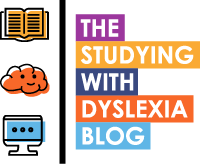One of the most natural ways for us to communicate is by voice. So why is it that with technology available that enables us to dictate into computers, our students who struggle with handwriting or typing don’t get access to this awesome tech? John Hicks explores ‘speech-to-text technology in this useful video.
I was recently asked to write a blog article for Aventido about how ‘speech-to-text’ technology can help with dyslexia. The article is based around the findings of a school in Australia that were claiming that speech-to-text technology helped their dyslexic pupils to be more confident and independent with their learning within the classroom.
It struck me that with technology we are increasingly using our voices to interact with devices such as with smart phones and smart speakers, so why shouldn’t our secondary school pupils who struggle with handwriting or touchtyping get access to this technology too in order to produce coursework and homework?
For some students with dyslexia, the actual ability to write words is truly difficult. Converting sounds, phonemes and language into the written word can sometimes feel like a huge disconnect and as such bring about feelings of frustration, overwhelm and poor self esteem.
For those who are truly experiencing this, there is no ‘cheat’ in using an alternative way to produce their school content. Even for those who perhaps do not get affected by these challenges, simply using their voice to type may mean that they don’t have to experience the fatigue of staring at a computer screen for hours on end and so might help with feelings of restlessness or challenges with concentration.
In the video above I explore Microsoft’s ‘Dictation’ feature in Office 365 and Nuance’s Dragon Naturally Speaking product and compare the strengths and weaknesses of both and how they fit in with the life of a secondary school student.
If you would like to find out more about Dragon Naturally Speaking then Aventido provide’s webinars and demos of the software by their expert, Sam Cock. Click the banner below to find out more.
Further links of interest:
What is your current plan of action for getting support in place for the dyslexic student in your family?
Don't have one?
Then I can help you formulate one so that you can unlock your child's potential by reigniting their love of learning.
Complete my Parenting Dyslexia Diagnostic and then book a 15 minute chat with me to discuss your results, review how far you have come so far and go away with at least an idea of your next step in getting what your child needs implemented.
Find out more at www.parentingdyslexia.co.uk/pddiagnostic



